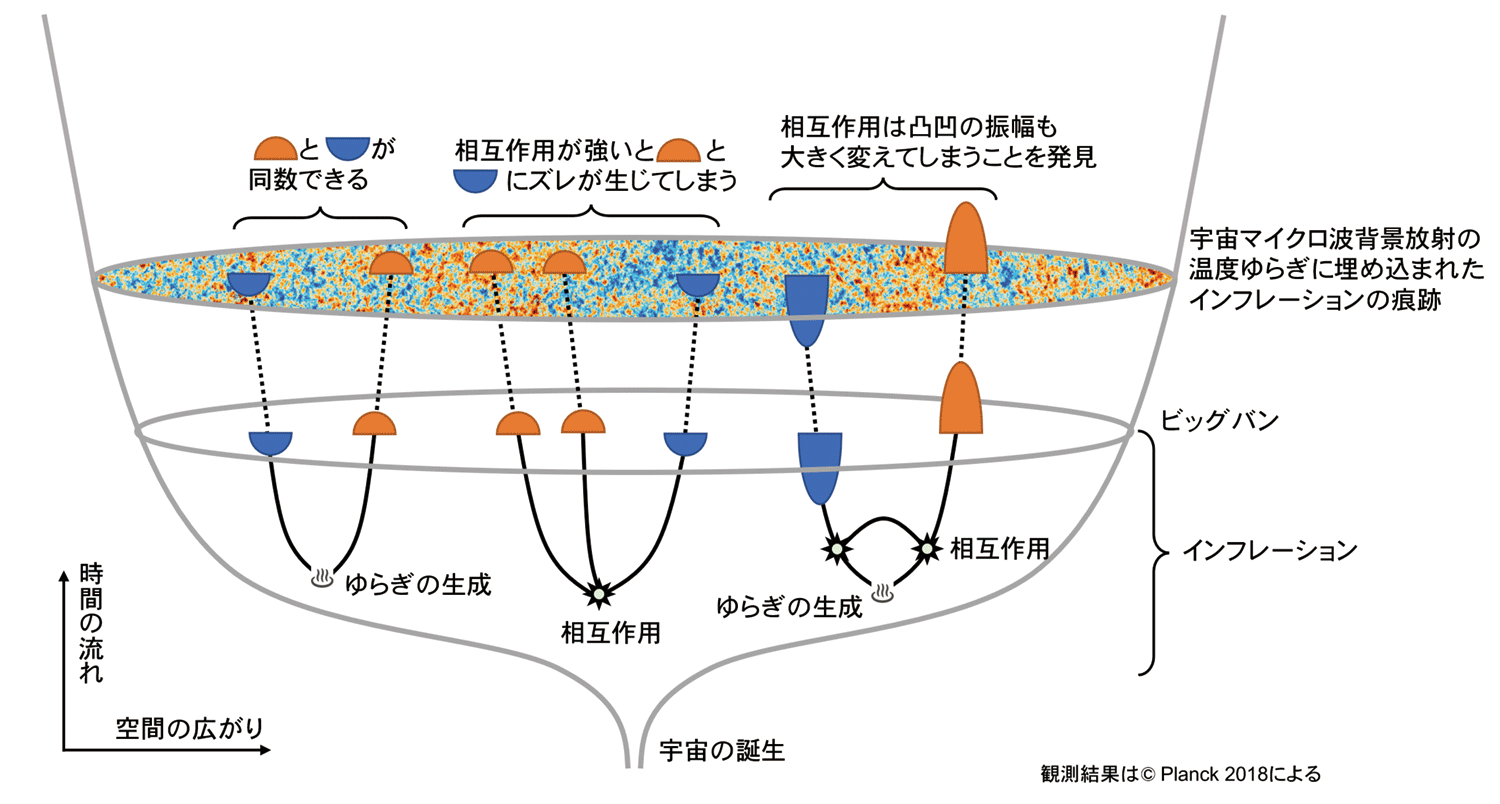Disclaimer: machine translated by DeepL which may contain errors.
Why Do Fluctuations in the Universe Follow a Gaussian Distribution?
Junichi Yokoyama, Professor, Research Center for the Early Universe |

![]()
In the macroscopic world in which we live, if we specify the position and velocity of a ball at a certain time, we can predict when and where it will reach without indefiniteness. However, in quantum theory, which is based on the microscopic world, particles such as electrons, for example, have the property of waves. Unlike a lump like a ball, a wave is known to be there only when we see it for a wavelength or observe it over a time period long enough for a wavelength to pass through. In other words, it is not possible to pinpoint both time and space. This indefiniteness is the true nature of fluctuation. Furthermore, in the quantum field theory that describes the interaction between elementary particles, the number of elementary particles themselves also fluctuates. This means that even in a vacuum, virtual particles can be born, disappear, collide, or change into other virtual particles.
Inflation, a rapid expansion, rapidly dilutes the energy of all matter, so that the universe is effectively a vacuum. Therefore, the quantum fluctuations of the inflaton have the same properties as those in a vacuum. According to quantum field theory, the fluctuations of elementary particle fields that do not collide or interact with other particles in a vacuum follow Gaussian statistics. On the other hand, if we take into account the effects of interactions in which the inflaton collides with itself or with other particle fields, even in a vacuum, we will find deviations from the Gaussian distribution.
Conversely, if we can find deviations from the Gaussian distribution through observation, we can learn what interactions the particle fields of inflation were having. This can be detected by observing the temperature fluctuations of the cosmic microwave background radiation, the oldest photons in the universe coming from all directions in the farthest universe. However, neither the Wilkinson Microwave Anisotropy Probe (WMAP) in the U.S. nor the Plank Hygiene mission in Europe has found any deviation from the Gaussian distribution.
We have recently found that such interactions, which cause deviations from the Gaussian distribution, cause large changes in the amplitude of the temperature fluctuations due to the collision of vacuum fluctuations, and are not consistent with the observed amplitudes (which are as small as 1/100,000). In other words, he found that a theory that correctly predicts the amplitude of fluctuations also predicts that the statistics of the fluctuations will be consistent with a Gaussian distribution with high accuracy. It is very interesting to note that this is the first time that the quantum field theory of elementary particles has been applied to the early universe, and that the results of this theory have been observed by the Planck probe, which observes photons at the farthest reaches of the universe.
 |
|
| Figure: Infraton interaction causes a discrepancy between the number of high-density and low-density regions, but if the interaction is too strong, the density inhomogeneity (convexity and concavity) becomes too large, which is inconsistent with observations, so the Infraton interaction is strongly suppressed and the Gaussian statistics is followed, with equal numbers of high-density and low-density regions. | |
This work was published in J. Kristiano and J. Yokoyama, Phys. Rev. Lett. 128, 061301 (2022).
(Press release, February 10, 2022)
Published in Faculty of Science News, May 2022
Communicating to Faculty Research Students >


